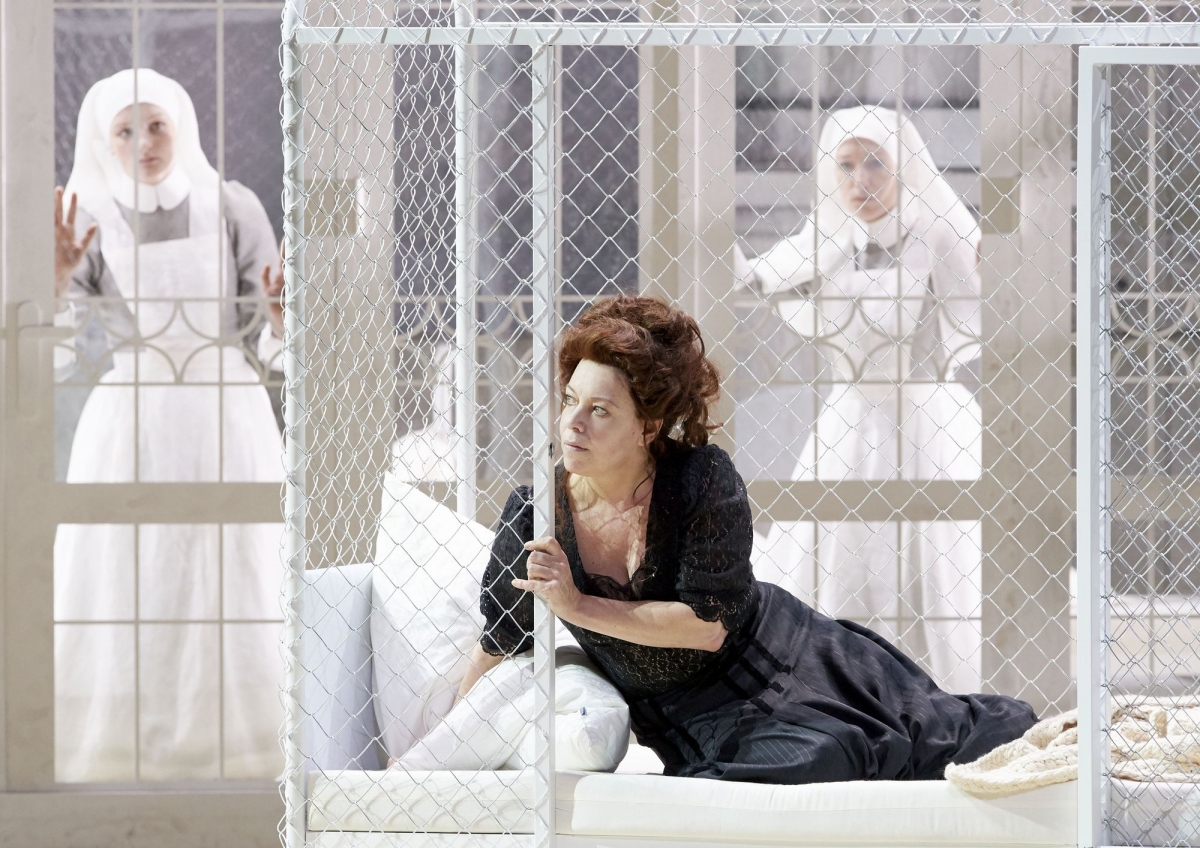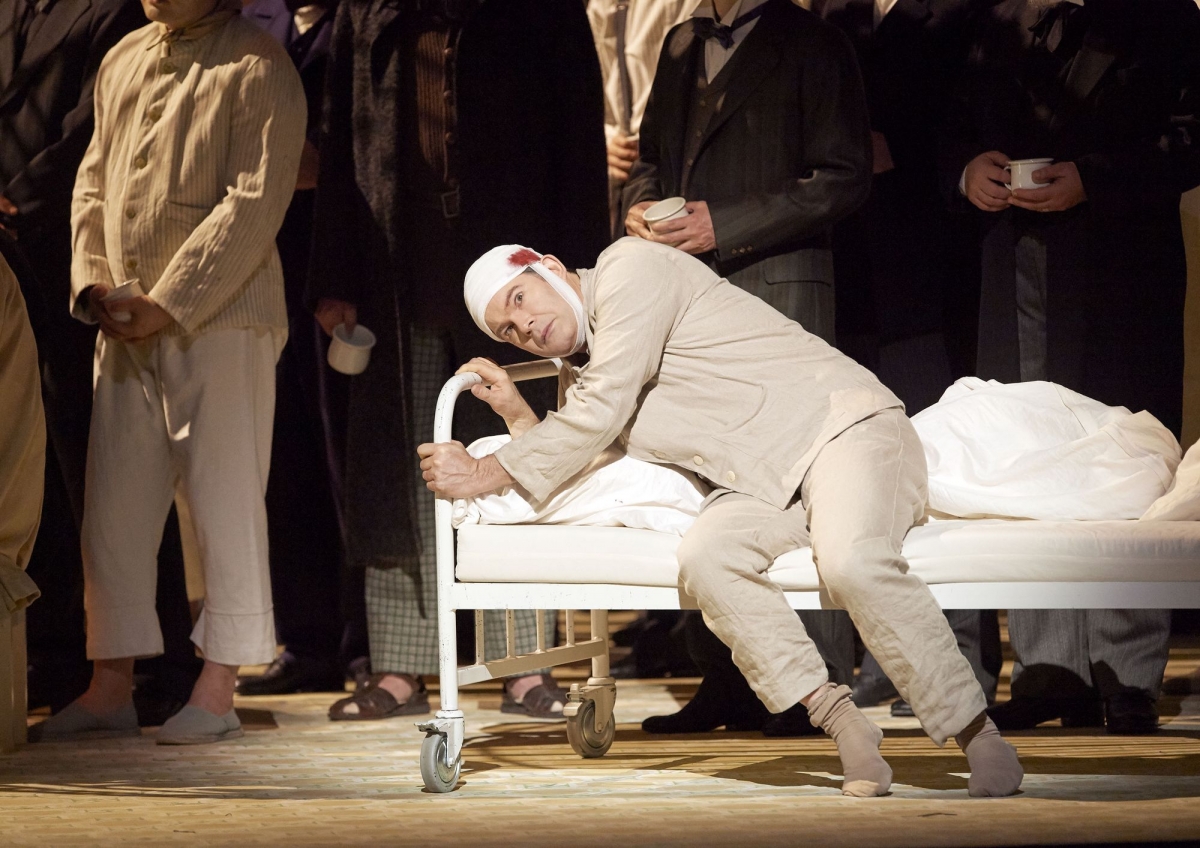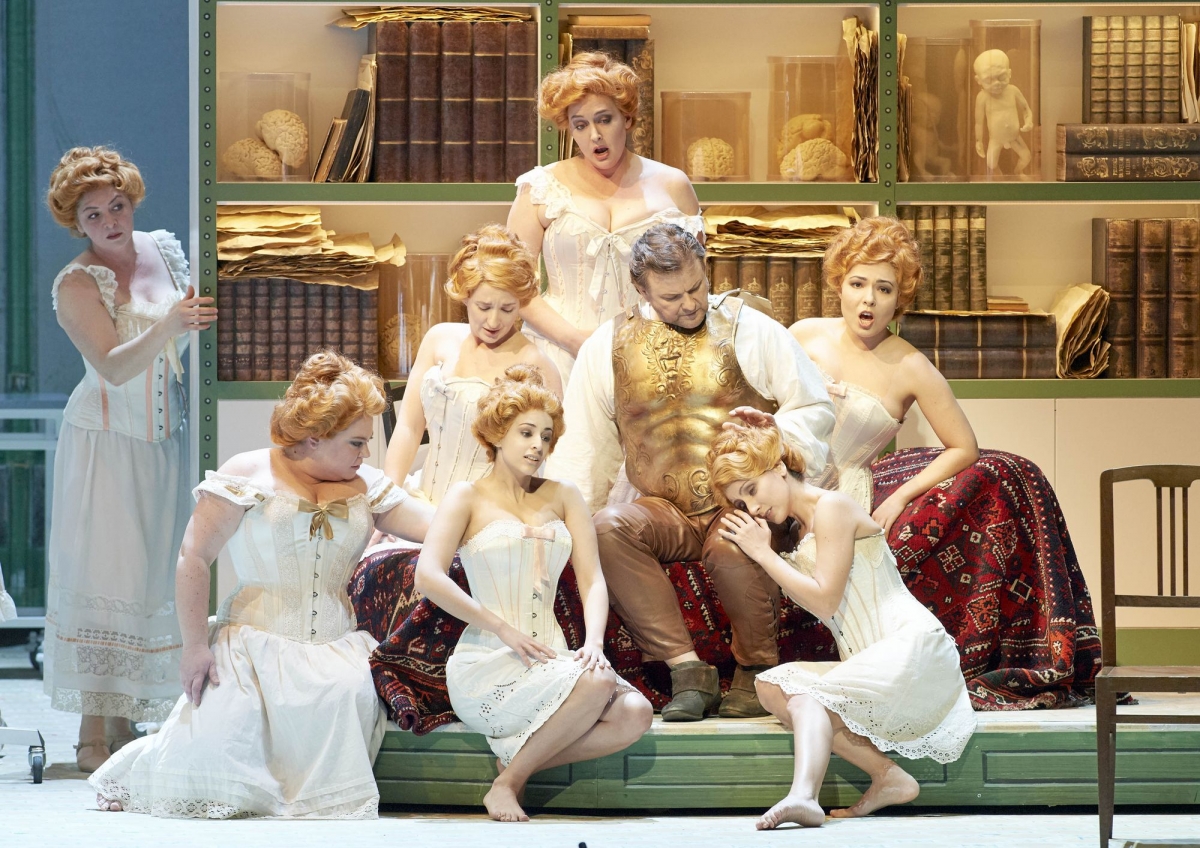From the moment his velvety bass followed the Prelude and started the vocal journey in the new Vienna Staatsoper production of Parsifal there could be no doubt that in Kwangchul Youn Australians will hear one of the world’s foremost exponents of the crucial role of Gurnemanz in Sydney in August.
Together with two of the six flower maidens sung by Australians, Margaret Plummer and Caroline Wenbourne, both now resident members of the Vienna company, this was a production with a strong Aussie flavour and for at least two audience members (by coincidence I found myself sitting next to another Sydneysider) our sense of anticipation was immeasurably heightened.
 Nina Stemme as Kundry in Wiener Staatsoper’s Parsifal. Photos © Michael Pöhn
Nina Stemme as Kundry in Wiener Staatsoper’s Parsifal. Photos © Michael Pöhn
Just as Sydney’s title-role Parsifal, Jonas Kaufmann, is the current tenor du jour, in the all-star cast of this production the shining light was Nina Stemme as Kundry. Not only is her gloriously rich soprano perfectly suited to the role of seductress, whether as a straightjacketed schizophrenic in a bed-sized cage or a gold-costumed siren lying on a Freudian couch, she lit up the stage. With three singer-actors of the calibre of Christopher Ventris (Parsifal), Jochen Schmeckenbecher (Klingsor) and Stemme perfectly matched vocally and dramatically, the Act 2 attempted-but-failed seduction and key stepping stone in Parsifal‘s journey from innocent fool to getting of wisdom had unusual power and dramatic force.
Of the other main characters, Gerald Finley was a strong and agonised Amfortas, while Jongmin Park provided a dying but distinguished Titurel.
Which brings us to Alvis Hermanis’ production – a psychiatric clinic! Not universally acclaimed by Vienna’s notoriously conservative audience, in view of the fact that Wagner’s based-on-mythology concept of a group of blokes holed up in a forest glade guarding a container filled with human blood has, for this reviewer at least, always raised the question of whether they belonged more properly in the loony bin, this seemed a not unreasonable interpretation; especially as the set was based on a real clinic designed by a well-known late-19th-century Austrian architect with the singularly appropriate name of Otto Wagner. More seriously, this is an opera about healing so where better to set a modern version than in a hospital.
 Gerald Finley as Amfortas in Wiener Staatsoper’s Parsifal
Gerald Finley as Amfortas in Wiener Staatsoper’s Parsifal
It was certainly not perfect – the flower maidens decked out in Marilyn Monroe type wigs bouncing uncoordinatedly up and down on hospital beds were a notable failure – but it did lend itself to some interesting characterisations. As a senior medico, Gurnemanz displayed appropriate gravitas. The operating theatre on the other hand with chief surgeon/sorcerer Klingsor inserting electrodes into the head of an unconscious patient who was apparently Parsifal’s mother (trying to bring her back to life?) was definitely creepy.
But in the end, whatever the idiosyncrasies of modern productions and character interpretations, Parsifal is all about the music. Sometimes said to be an orchestral symphony with vocal accompaniment, the work is more philosophical treatise than opera with characters and a narrative in the traditional sense. However it is described, the defining feature of what is regarded by many as Wagner’s greatest work is arguably the most sublime music ever written. Played, as here, by the Vienna Philharmonic Opera Orchestra which has this music in its soul, under the direction of Semyon Bychkov – who incidentally generated the loudest and longest applause – it was over five hours of the most profound and magnificent orchestral composition it is possible to experience.
 Parsifal (Christopher Ventris) and the flower maidens in Wiener Staatsoper’s Parsifal
Parsifal (Christopher Ventris) and the flower maidens in Wiener Staatsoper’s Parsifal
In the context of Sydney, Wagner’s operas, more than most, lend themselves to concert performance, with its ability to highlight without visual distraction the musical tapestry at the heart of what the composer himself preferred to call his music dramas. Parsifal is the ultimate exponent of this.
Parsifal was Wagner’s last work and he died a year later. He had taken music to a new level and after completing the Ring perhaps he had exhausted all the creative possibilities of conventional opera. A longtime devotee of Schopenhauer and Nietzsche, with whom he formed close if sometimes volatile friendships, Parsifal was really a compendium of his entire life’s thoughts, ideas and philosophies. Listening to that music with its overwhelming spirituality one had to wonder if having finally got to the end of his bucket list there was no point in trying to do anything more.











Comments
Log in to join the conversation.